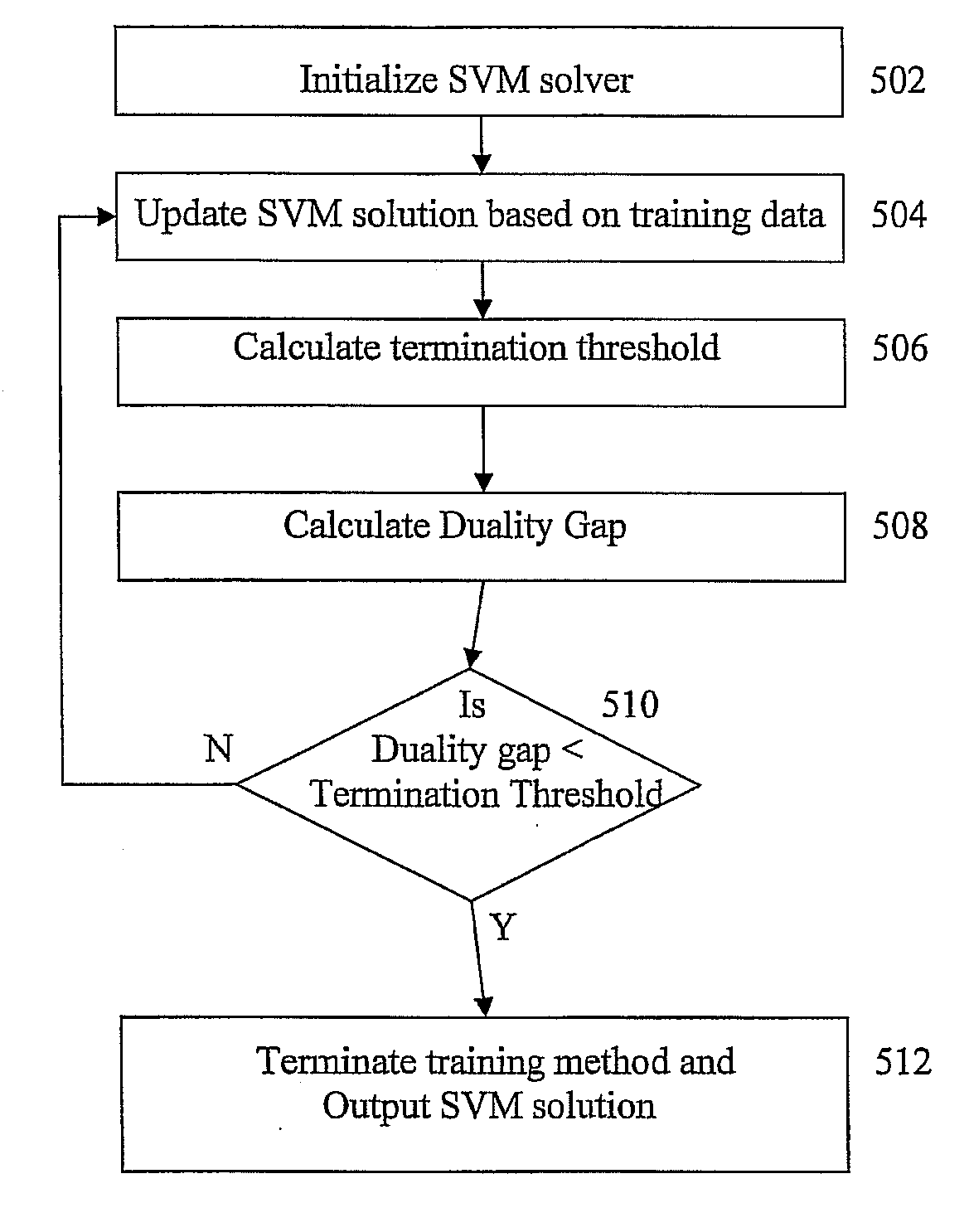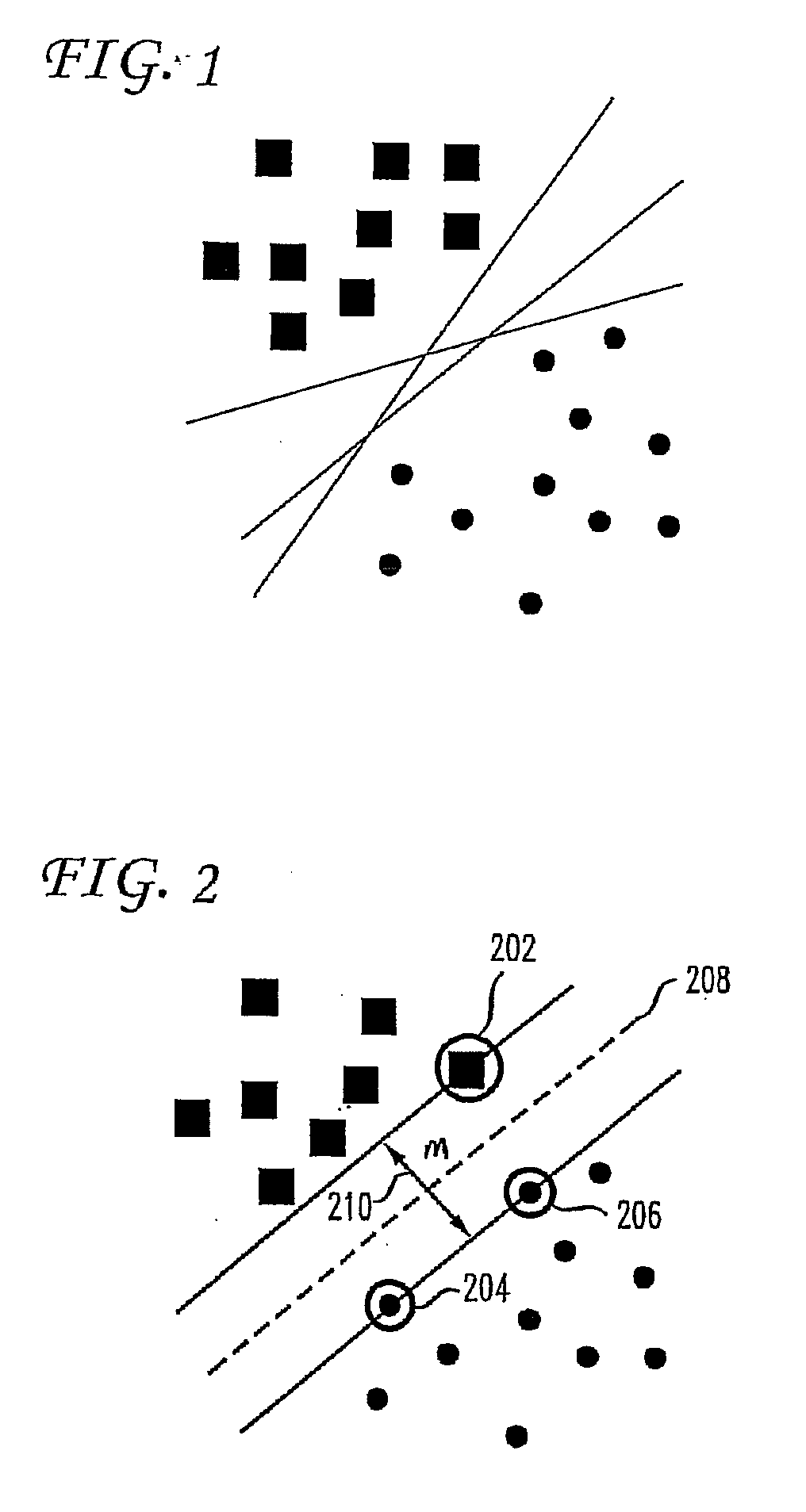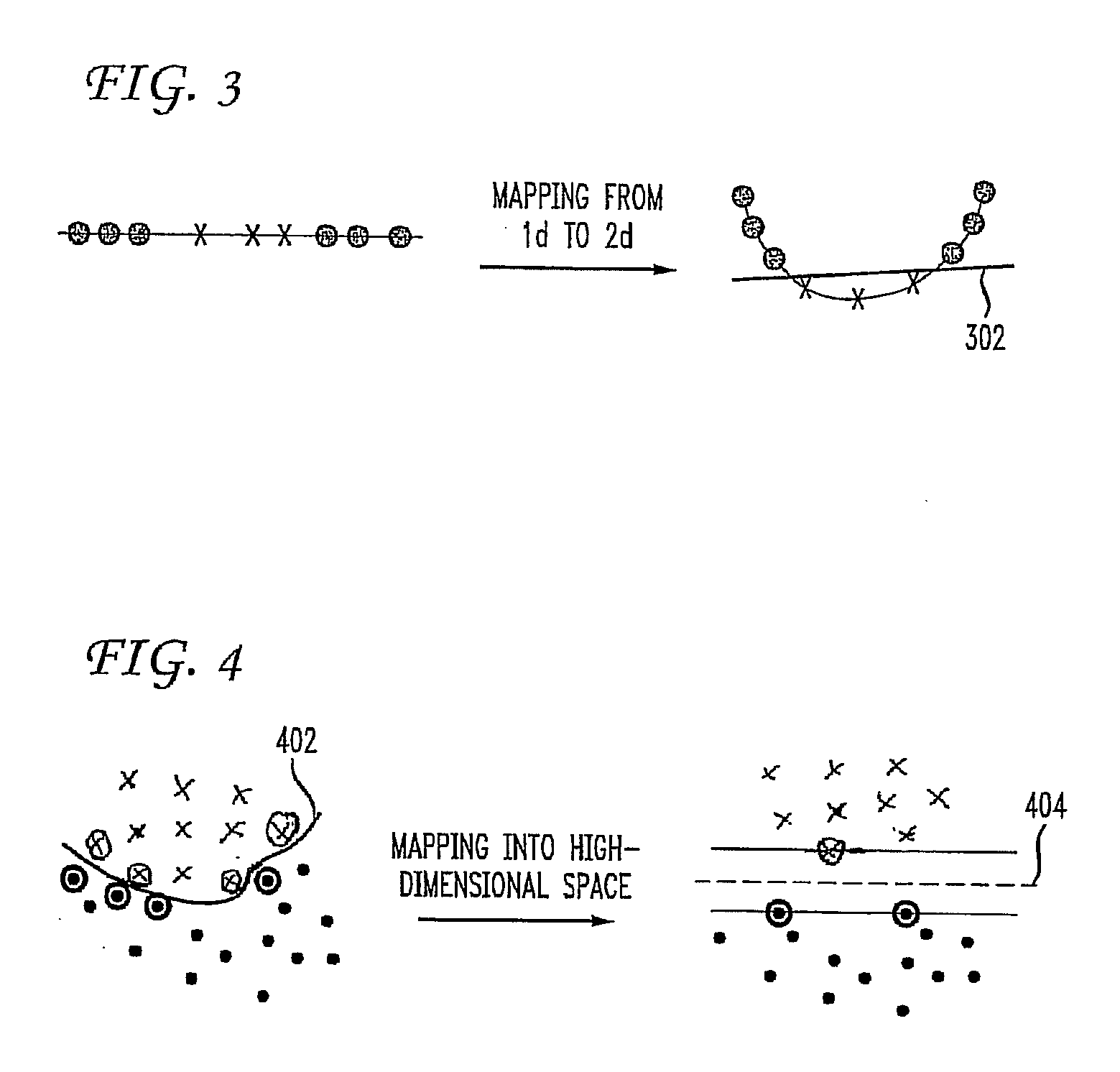Method and Apparatus for Early Termination in Training of Support Vector Machines
a technology of support vector machine and early termination, applied in the field of machine learning, can solve the problems of not always the case, two-dimensional data are not linearly separable, and it may be difficult to solve the problem of minimization directly
- Summary
- Abstract
- Description
- Claims
- Application Information
AI Technical Summary
Benefits of technology
Problems solved by technology
Method used
Image
Examples
Embodiment Construction
[0017]The central role of optimization in the design of a machine learning algorithm derives naturally from a widely accepted mathematical setup of a learning problem. For example, a learning problem can be described as the minimization of the expected risk Q(f)=∫L(x,y,f)dP(x,y) in a situation where the ground truth probability distribution dP(x,y) is unknown, except for a finite sample {(x1,y1), . . . , (xn,yn)} of independently drawn examples. Statistical learning theory indicates this problem can be approached by minimizing the empirical risk Qn(f)=. . . n−1ΣL(xi,yi,f) subject to a restriction of the form Ω(f)n. This leads to the minimization of the penalized empirical risk:
Qn,λn(f)=λnΩ(f)+n-1∑i=1nL(xi,yi,f)(1)
The penalized empirical risk expressed in Equation (1) can be minimized using various optimization algorithms. Embodiments of the present invention expedite this process by termination of such an optimization before reaching the optimum value. This “early termination” of an...
PUM
 Login to View More
Login to View More Abstract
Description
Claims
Application Information
 Login to View More
Login to View More - R&D
- Intellectual Property
- Life Sciences
- Materials
- Tech Scout
- Unparalleled Data Quality
- Higher Quality Content
- 60% Fewer Hallucinations
Browse by: Latest US Patents, China's latest patents, Technical Efficacy Thesaurus, Application Domain, Technology Topic, Popular Technical Reports.
© 2025 PatSnap. All rights reserved.Legal|Privacy policy|Modern Slavery Act Transparency Statement|Sitemap|About US| Contact US: help@patsnap.com



